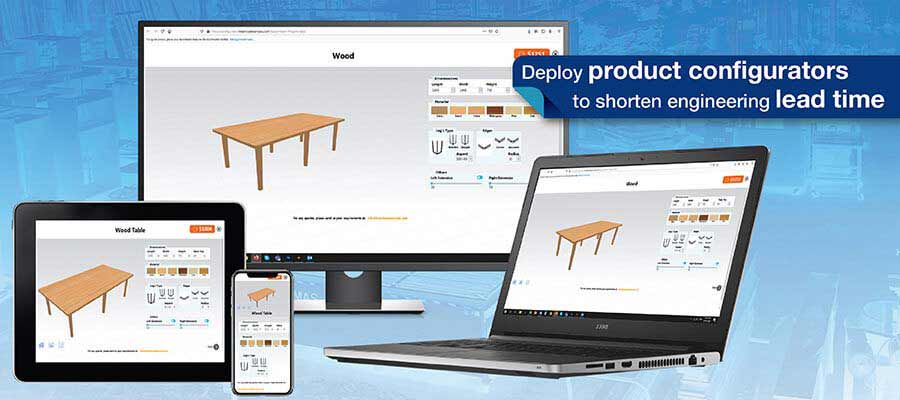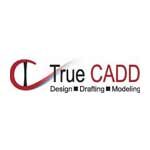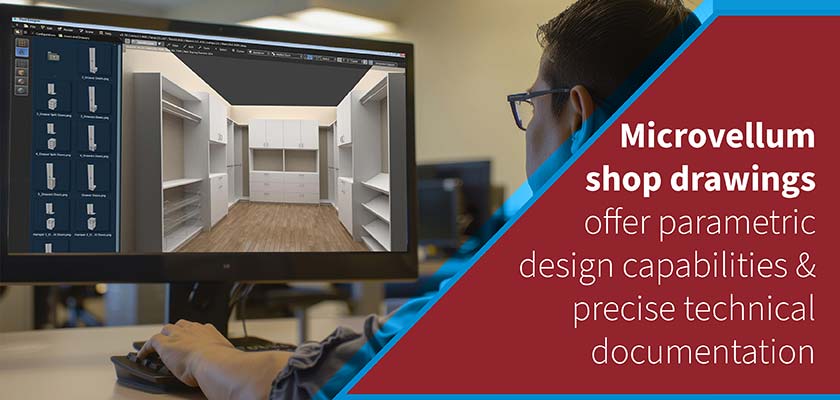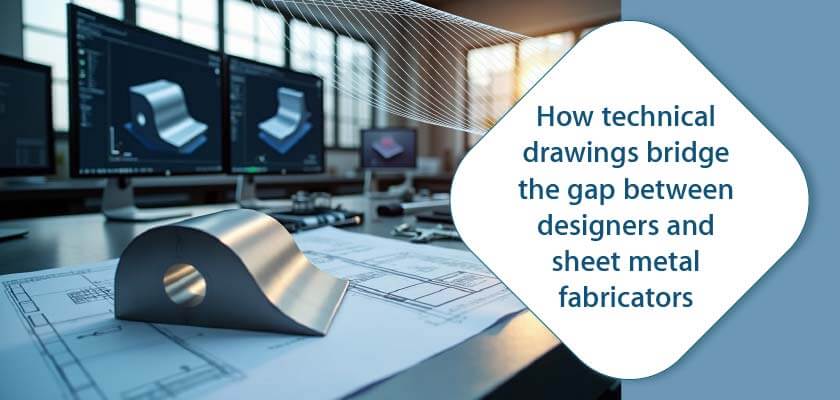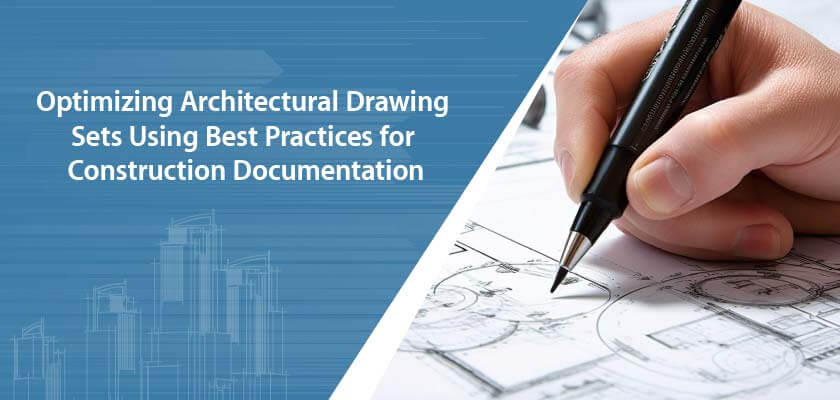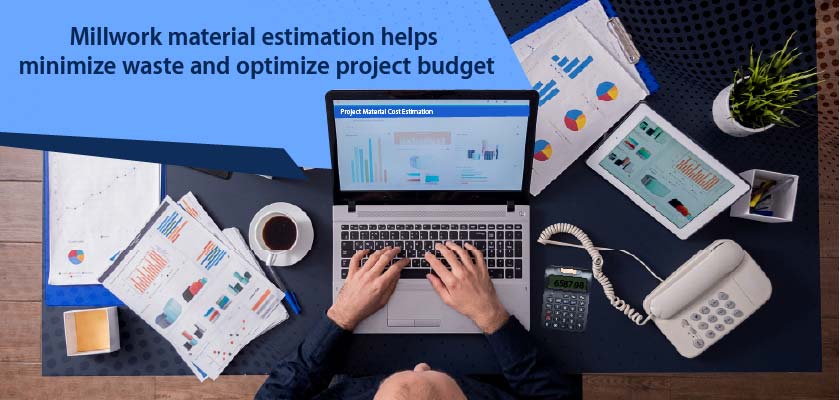Product personalization frequently results in delays and missed deadlines, causing manufacturers to incur significant losses in materials and budget. By using a product configurator, manufacturers can expedite the design cycle by eliminating repetitive tasks, potentially saving hundreds of design hours.
info@truecadd.com
Product Configurator: How did we save 100s of design hours?
Modern-day customers demand products that precisely match their vision, seeking uniqueness in every purchase. This desire for customization spans a wide range of products, from furniture to industrial equipment, with users expecting tailored design features for their specific needs. However, this level of personalization poses significant challenges for product manufacturers and designers. They often grapple with iterative design processes that can consume hundreds of hours, struggling to meet these highly individualized demands.
Table of Contents
Challenges faced by custom product manufacturers
- Adapting to Constantly Changing Design Inputs: Manufacturers often encounter lengthy design cycles due to the need to incorporate ongoing changes in design inputs from customers.
- Communication Delays between Sales and Engineering: Inefficiencies in communication between the sales and engineering departments can lead to increased response times to customer inquiries, potentially resulting in the loss of customers.
- Time-Consuming Development of Detailed Manufacturing Drawings: A significant amount of time is dedicated to developing detailed manufacturing drawings that meet industry standards, adding to the overall duration and complexity of the production process.
The key to overcoming lengthy and labor-intensive design phases lies in reducing modeling, drafting, and approval times through the use of a product configurator.
At TrueCADD, we’ve successfully implemented several product configurators, utilizing platforms such as DriveWorks, Configuration360, and MS Excel Spreadsheets. These tools enable us to automate designs, saving numerous man-hours previously spent in the design process.
Our design automation engineers are capable of reducing cycle times by up to 70%, cutting down the design phase to just a few minutes. With a product configurator, tasks that once required multiple CAD engineers can now be efficiently managed by a non-technical sales representative or even the customer themselves. The 3D configurator’s interactive interface allows design engineers to complete what used to be hours-long modeling jobs in just minutes.
How can product configurators enhance design customization and streamline the design process?
Product configurators can significantly enhance design customization and streamline the design process in several ways:
- User-Driven Customization: Product configurators allow customers to easily select and customize products according to their preferences. This interactive process can include choosing different features, colors, and dimensions, providing a personalized experience without the need for direct designer involvement.
- Real-Time Visualization: Configurators often offer real-time visualization, enabling customers to see how their choices affect the final product. This immediate feedback loop helps in making informed decisions and reduces the time spent on back-and-forth communication between the customer and the designer.
- Automation of Routine Tasks: By automating repetitive and routine design tasks, configurators free up designers to focus on more complex and value-added activities. This automation also reduces the likelihood of human error in the design process.
- Standardization of Customization Options: Configurators standardize the customization process, ensuring that all modifications are feasible and within the production capabilities. This standardization helps in maintaining quality and consistency across products.
- Integration with Production Systems: Product configurators can be integrated with manufacturing systems (like CAD/CAM or ERP systems), facilitating a seamless transition from design to production. This integration helps in streamlining the manufacturing process, as the production line can automatically adjust to the configured designs.
- Faster Time-to-Market: By reducing the time spent on designing and prototyping, product configurators can significantly shorten the product development cycle, leading to faster time-to-market for customized products.
- Reduced Costs: The efficiency brought by configurators can lead to cost savings. Reductions in design time, less need for physical prototypes, and minimized errors contribute to overall cost efficiency.
- Enhanced Customer Satisfaction: Offering customers the ability to tailor products to their specific needs can lead to higher satisfaction and loyalty. It also provides a competitive advantage in markets where customization is highly valued.
- Data Collection and Analysis: Configurators can collect valuable data on customer preferences and trends, which can inform future product development and marketing strategies.
- Scalability: Product configurators can easily handle a large number of customization requests simultaneously, making them highly scalable and suitable for businesses of all sizes.
Product configurators uplift the design process by enhancing customization, reducing manual efforts, and integrating closely with manufacturing, all while improving customer engagement and satisfaction.
Cases where 3D product configurators reduced custom design cycle time
DriveWorks automated tools reduced 70% design cycle time for a door manufacturer
Challenges faced by the door manufacturer
A USA based hollow metal door manufacturer was operating with vaguely defined flow of internal requests. The orders and the customer specifications were spread across the teams resulting in long time lapses between receipts of enquiries and responding to them. A simple hollow metal door took about 4-5 days to pass through the iterative design phase let alone the approval and initiation of manufacturing and had high chances of design errors.
Solution: Using DriveWorks configurator alongside SolidWorks
To streamline the sales order process and eliminate repetitive drawing tasks, TrueCADD engineers developed an SQL database for collecting customer design specification at one place. Simultaneously, master models of the door, locks, accessories, hinges, frames etc., were developed in SolidWorks. Coders worked on developing logical rules to capture design intelligence and reuse it for customization.
DriveWorks design automation was used in collaboration with SolidWorks to create and deploy a configurator interface and allow customization. The interface was populated with design options using SQL database for the doors and accessories which led 70,000+ complete different doors.
The entire design process and approvals were eliminated and it took about only 15 minutes to finalize the door design and provided shop floor with error-free BoMs and manufacturing drawings. The latter were auto generated based on the logical rules which eliminated possibility of any drawing mistakes and production could be started the same day.
Following impacts other than time reduction were achieved with SolidWorks and DriveWorks automated tools:
- Reduced expenditure with configurator
- Door designs were 99% error free
- Quick response to customers
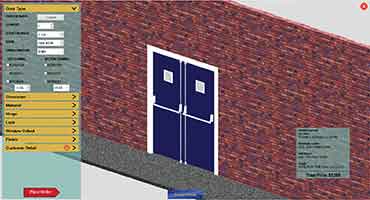
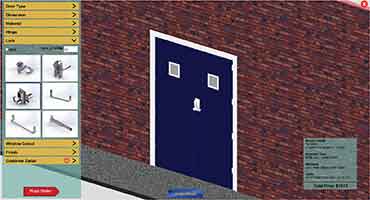
Deployed Autodesk Inventor iLogic to achieve same day manufacturing for a process tank manufacturer
Challenges faced by the tank manufacturer
An industrial equipment manufacturer based out of Netherlands was using Excel spreadsheets-based tools to assimilate customer specifications data and generate SolidWorks models. It needed their designers to invest 10-12 hours per tank for design configuration of tank body, accessories, mounting etc. and generating manufacturing drawings. The cycle from order receipt to delivery to the end client was of 2-3 days as the design process involved iterative changes and long approvals.
Solution: Configuring tank design with iLogic and Configurator 360
As the client was looking to move from SolidWorks to Inventor our engineers suggested adopting Built-To-Order with design automation practices using iLogic rules and Configurator 360. This was aimed at reducing long man-hours invested by client’s CAD engineers in modeling and enable faster time to market.
TrueCADD’s automation team collected broad inputs from customers based on which master model was developed along with logical rules. It was populated with design options within permissible limits to avoid any ECOs from shop floor due to short of tooling capabilities.
These logical rules generated using scripts and codes in iLogic automated manufacturing drawings generation with part lists, BoMs, with custom pricing using scripts and codes in iLogic. Relevant sales documents, part list and assembly and installation guides were also immediately shared with the end customer for transparency in timelines. This logical rules-based 3D product configurator completely eliminated the iterative design process and made it possible to kick start tank production the same day.
Following impacts, other than time reduction were achieved with iLogic rules and Configurator 360:
- Eliminated reworks in drafting and modeling
- Primary modeling become more convenient using Inventor
- Offered flexibility in future tank designs
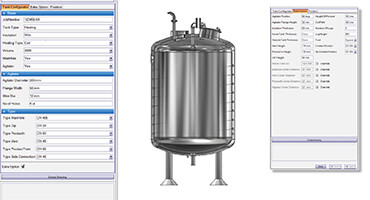
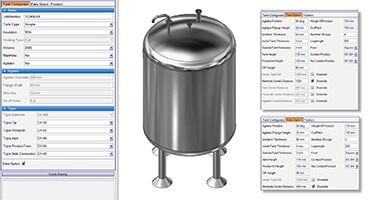
Reduced design time for door manufacturer using Excel-based automated design solution
Challenges faced by the door and frame manufacturer
The small-scale door manufacturer had a range of 30-35 products for doors and frames which could be customized as per customer’s request. With this high range of product options and a small team of design engineers, the modeling task and approval took a long time. Also, managing database for every customer’s input was difficult with no automation tool. The drawing generation was error prone due to mismanagement of data and long took long times for corrections.
Solution: Cost effective configurator using MS Excel Spreadsheet
The automation team led the project with primary investigation to analyze the scope of automation across the sales order and requests for customization. Since the client was already using MS Excel spreadsheets, the team suggested developing macros using VBA scripts in MS Excel which connects with the primary CAD platform.
Master CAD models were developed in SolidWorks and logical rules, based on the types of customization, for door designs received in the past were created. It ensured that most of the popular design specifications were covered in the logical rules for developing the 3D product configurator.
Any design revision in dimensions, end client data, project name, option for generate DXFs could be fetched from the Excel and saved in CAD library. This saved time in generating manufacturing drawing or resining them. All technical documents were also generated automatically and saved time by reducing design cycle time from 15 days to a few hours.
Following impacts, other than time reduction were achieved with MS Excel based configurator:
- VBA offered cost effective configurator for a small-scale manufacturer
- Fewer errors transmitted to the shop floor
- Output/input data was saved in database in a structured format
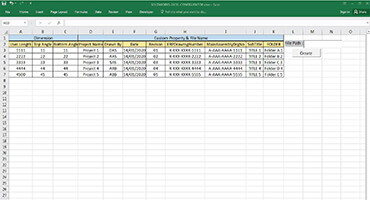
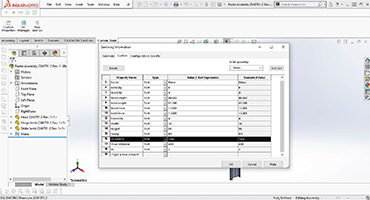
Time to automate designs with product configurator now!
Just as CAD reformed the drawing practices of paper drawing by the virtue of parametricity and easy design corrections, product configurators, today, are revamping iterative custom designing in standalone CAD.
Many manufacturers are constantly searching for an automated tool suitable to their business and technical needs to get to the markets faster.
It’s time you leverage automation using product configurators – the platform that suits your business needs and your primary CAD tool!
Reach out to us and let our automation engineers study your CAD systems as well as your product mix along with your budgets to deploy the optimum configurator for design automation.
Let’s deploy a configurator for your business today
Need help on an ongoing basis?
We establish long term business relationships with clients and are committed to total customer satisfaction.
